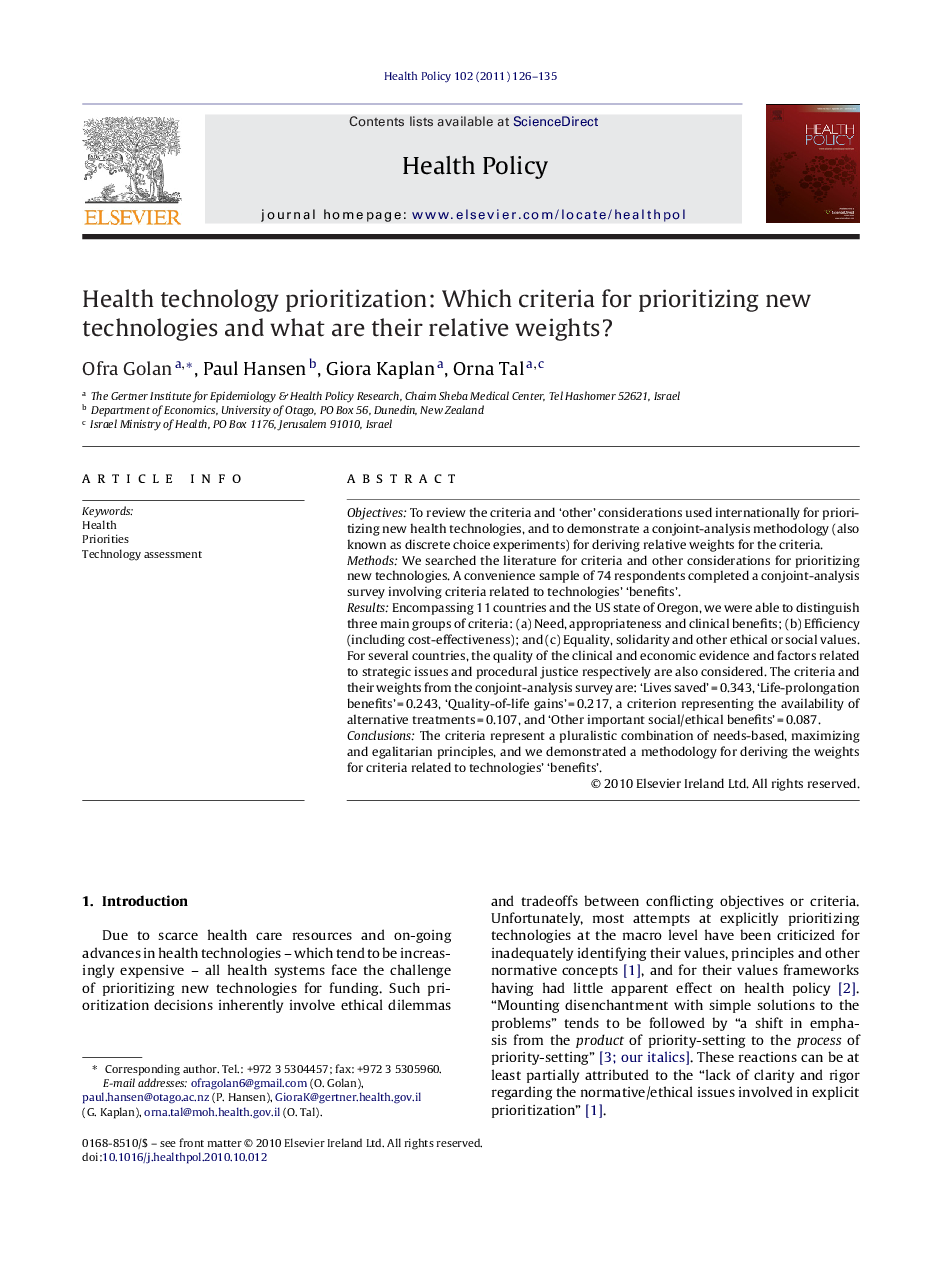| Article ID | Journal | Published Year | Pages | File Type |
|---|---|---|---|---|
| 4198109 | Health Policy | 2011 | 10 Pages |
ObjectivesTo review the criteria and ‘other’ considerations used internationally for prioritizing new health technologies, and to demonstrate a conjoint-analysis methodology (also known as discrete choice experiments) for deriving relative weights for the criteria.MethodsWe searched the literature for criteria and other considerations for prioritizing new technologies. A convenience sample of 74 respondents completed a conjoint-analysis survey involving criteria related to technologies’ ‘benefits’.ResultsEncompassing 11 countries and the US state of Oregon, we were able to distinguish three main groups of criteria: (a) Need, appropriateness and clinical benefits; (b) Efficiency (including cost-effectiveness); and (c) Equality, solidarity and other ethical or social values. For several countries, the quality of the clinical and economic evidence and factors related to strategic issues and procedural justice respectively are also considered. The criteria and their weights from the conjoint-analysis survey are: ‘Lives saved’ = 0.343, ‘Life-prolongation benefits’ = 0.243, ‘Quality-of-life gains’ = 0.217, a criterion representing the availability of alternative treatments = 0.107, and ‘Other important social/ethical benefits’ = 0.087.ConclusionsThe criteria represent a pluralistic combination of needs-based, maximizing and egalitarian principles, and we demonstrated a methodology for deriving the weights for criteria related to technologies’ ‘benefits’.
